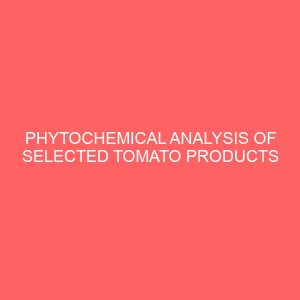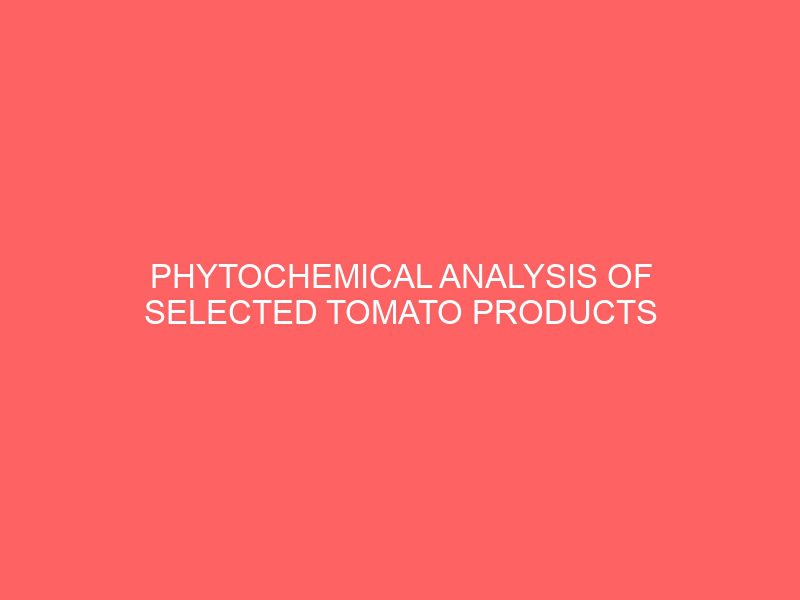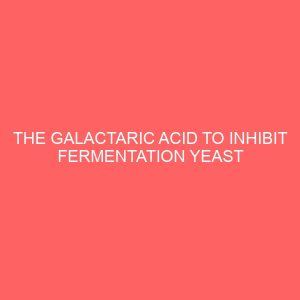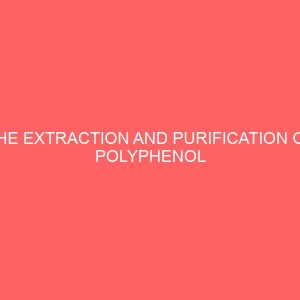Description
TABLE OF CONTENT
Title page i
Approval pageii
Dedicationiii
Acknowlegdementiv
Abstractv
Table of contentsvi
List of tables
List of figures
Abbreviations
CHAPTER ONE
1.0 Introduction1
1.1 Objectives of the Study5
CHAPTER TWO
2.0 Literature Review6
2.1 Importance of Phytochemicals8
2.1.1 Mechanism of Action of Tomato Phytochemicals9
2.1.2 Importance of Tomatoes13
2.2 Structure of Vitamin C and its Activity13
2.2.1 Biosynthesis and speciessynthetic ability14
2.2.2 Absorption, Transport and Disposal15
2.2.3 Deficiency17
2.2.4 Physiological functions in mammals20
2.2.5 Daily requirement23
2.2.6 Therapeutic uses24
2.2.7 Adverse effects24
2.3 Structure of Beta Carotene and its Activity25
2.3.1 Previtamin A activity25
2.3.2 Symmetric and Asymmetric Cleavage26
2.3.3 Sources in Diet27
2.3.4 Side Effects28
2.3.5 Beta Carotene and lung cancer in smokers29
2.3.6 Uses based on Scientific Evidence30
2.4 Structure of Lycopene and Its Chemical Activity31
2.4.1 Bioavailability of Lycopene32
2.4.2 Digestion and absorption of Lycopene36
2.4.3 Roles of Lycopene in Human Health38
2.5 Structure of Polyphenol and its activity39
2.5.1 Classification and Nomenclature41
2.5.2Potential Health Benefits43
CHAPTER THREE
3.0 Materials and Methods44
3.1 Equipments/Apparatus44
3.2 Procurement of Raw Materials44
3.3 Study Design45
3.4 Sample Processing45
3.5 Chemical Analysis of Samples45
3.5.1Vitamin C content determination45
3.5.2Betacarotene content Determination46
3.5.3 Lycopene Content Determination 47
CHAPTER FOUR
4.0 Results and discussion48
CHAPTER FIVE
5.0 Conclusion61
Reference63








Reviews
There are no reviews yet.